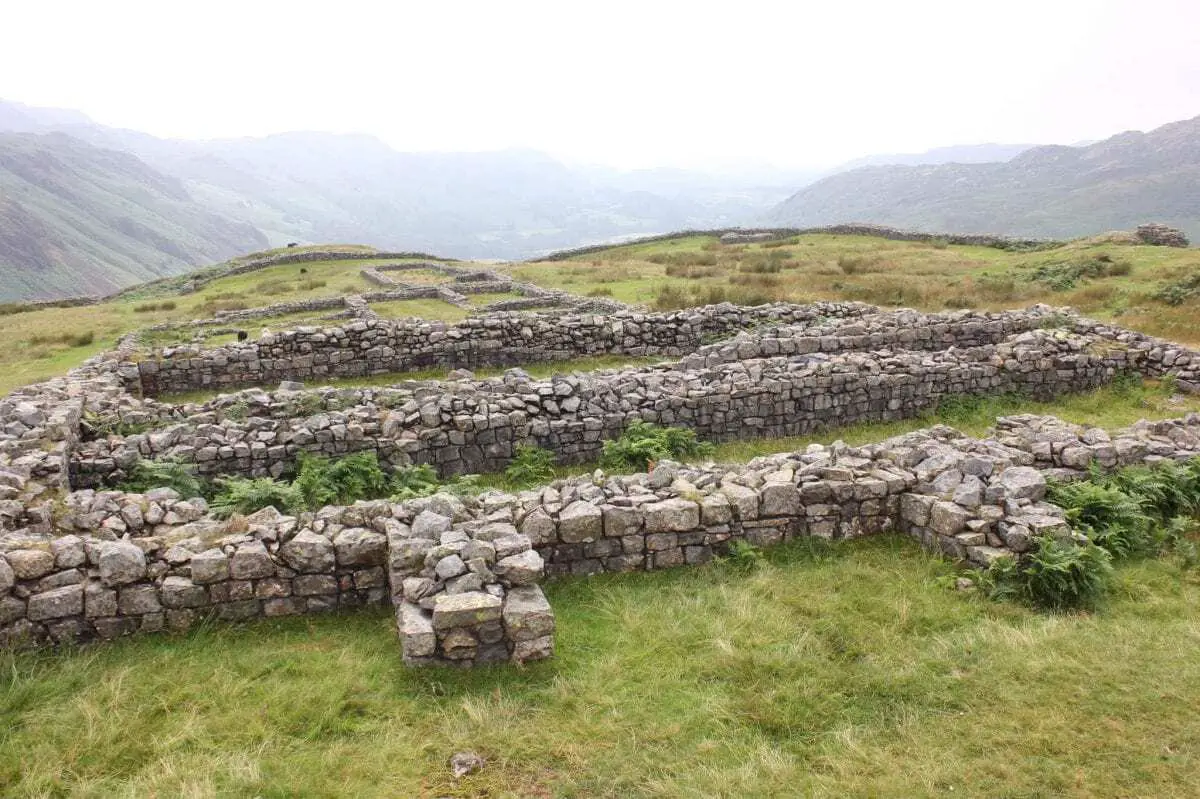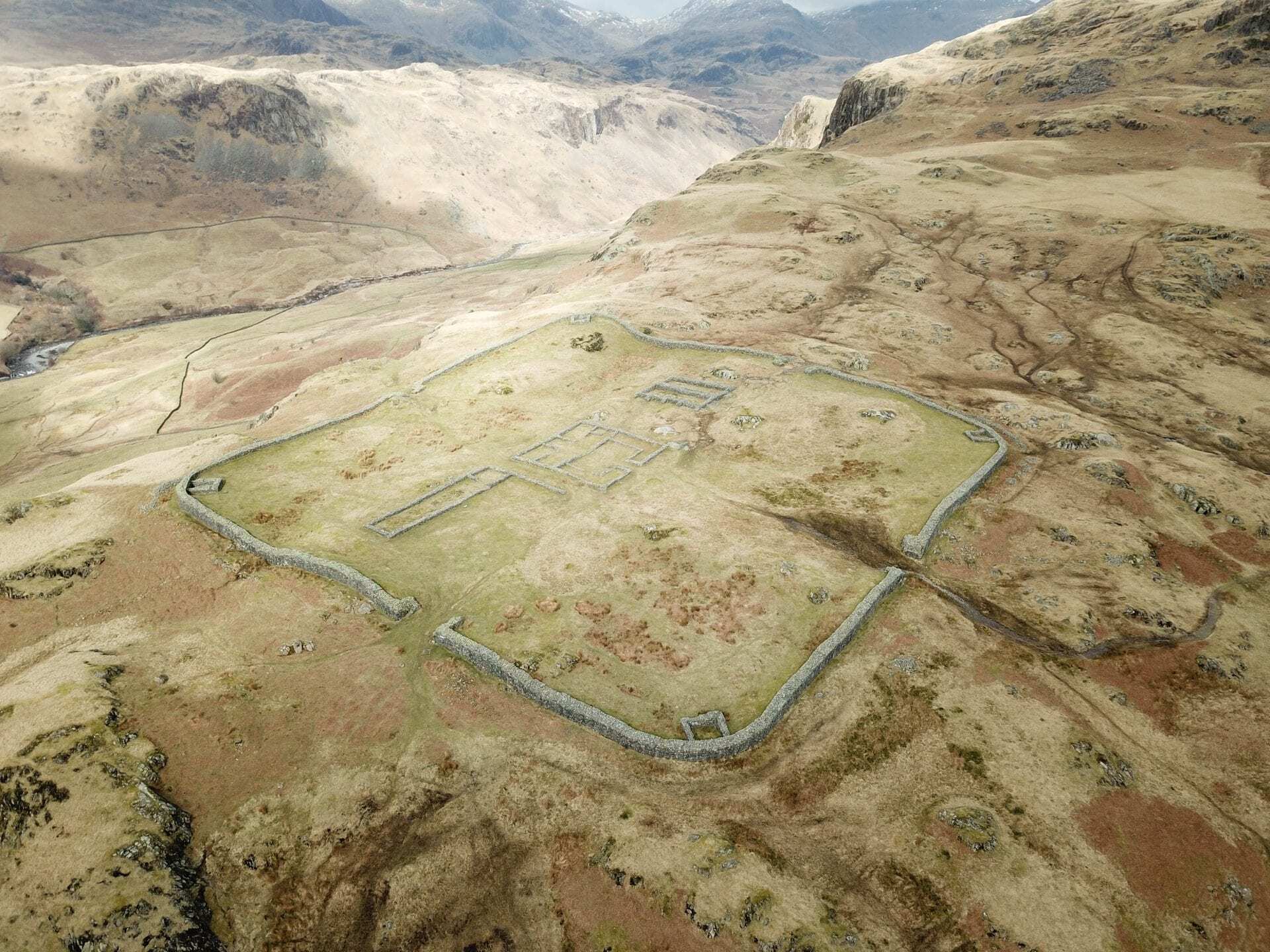Hardknott Roman Fort, also known as Mediobogdum in the Ravenna Cosmography is a Roman Fort constructed at the Hardknott Pass in the Lake District, Cumbria, England to guard against raids by the Scots and Brigantes
The fort is built on a rocky spur at an altitude of 800 feet and is one of the highest forts constructed in the Roman province of Britannia (the highest being Epiacum/Whitley Castle).
A major Roman road called the 10th iter ran from the fort at Ravenglass (Glannaventa) up through the Eskdale Valley to Hardknott Fort, before continuing over the Hardknott and Wynose passes towards the other Roman forts at Ambleside (Galava).

Hardknott Fort dates from around the 2nd century AD, during the reign of Hadrian and was garrisoned by the Fourth Cohort of Dalmatians from the Balkans and infantry soldiers from Croatia, Montenegro and Bosnia-Herzegovina.
The fort was demilitarised around 130 AD, when the Romans pushed the frontier further north into Southern Scotland, but was refortified during the reign of Marcus Aurelius around 160 AD until eventually being abandoned by the very beginning of the 3rd century.

The forts design is a typical square/rectangular shape covering an area of around 2-and three-quarter acres with rounded corners that was 1.7 metres thick with defensive ditches. Within the walls are the remaining outlines of several buildings: two side-by-side granaries, the garrison headquarters building, a temple and the garrison commander’s villa, or Praetorium. Many timber structures would have housed barracks for the mounted auxilia or leather tents, remnants of which have been recovered in excavations.
Outside the fort was a bathhouse with a circular sudatorium that consisted of four rooms, one containing a furnace, whilst the remaining rooms housed hot, warm and cold baths. Archaeologists also discovered a large parade ground where soldiers exercised and practised drill manoeuvres which is the finest surviving example in the Western Empire.

Hardknott fort was first excavated between 1889 and 1894 by C W Dymond, with additional excavations in the 1950’s and 60’s that involved clearing debris from the walls and the consolidation and partial re-building of the walls.
Header Image Credit :





